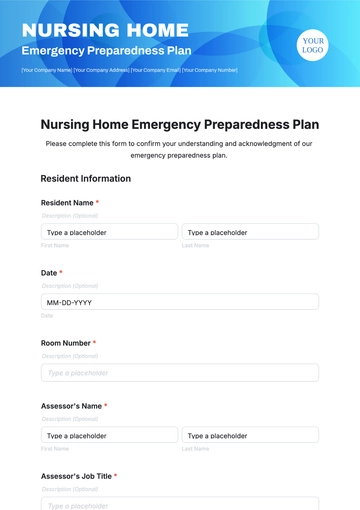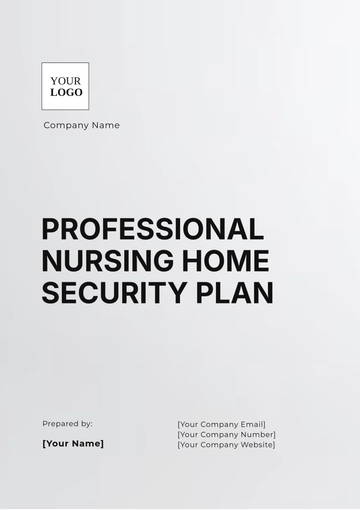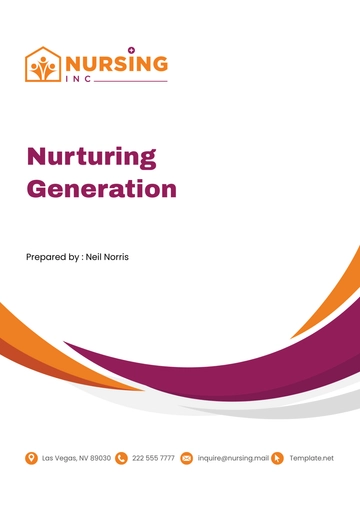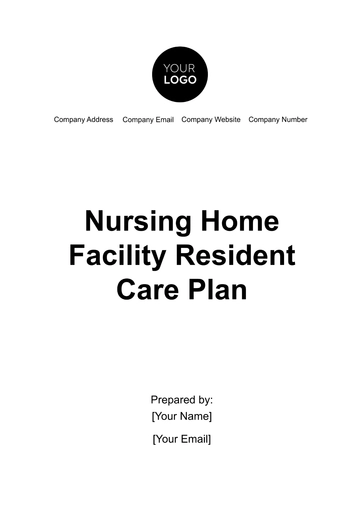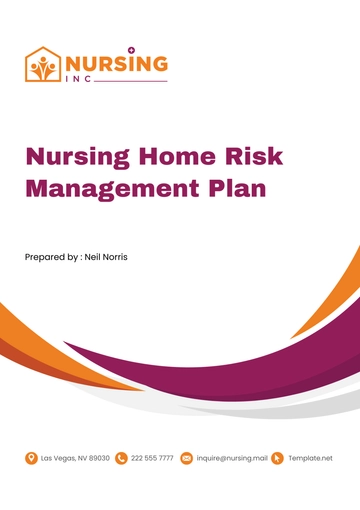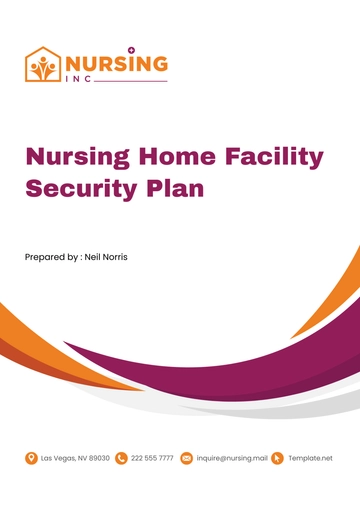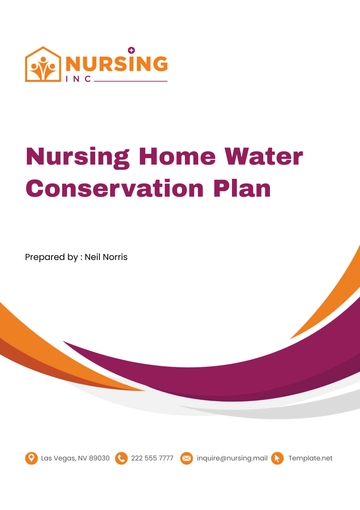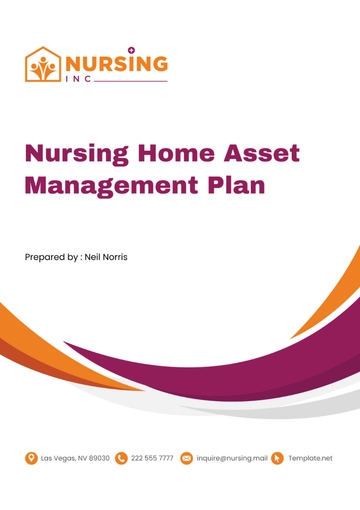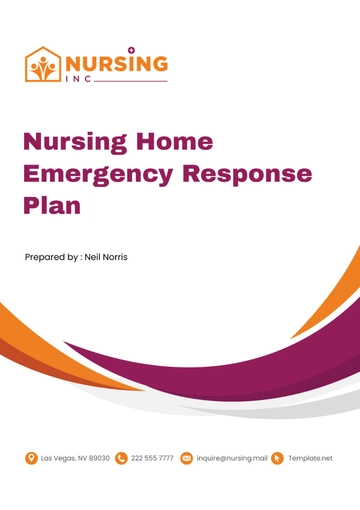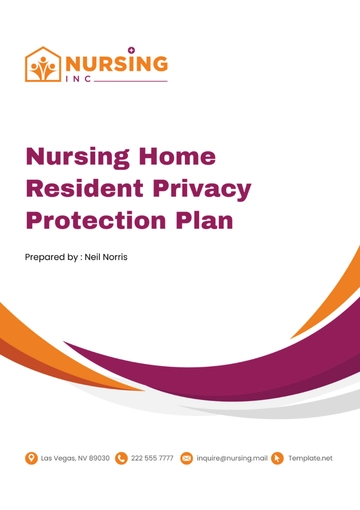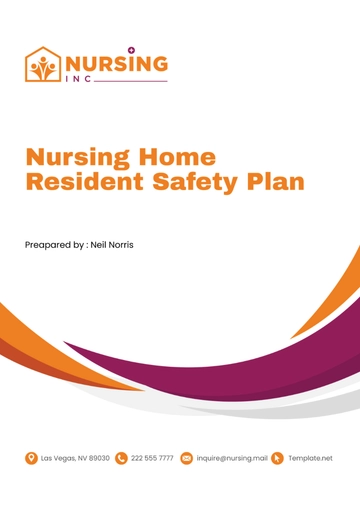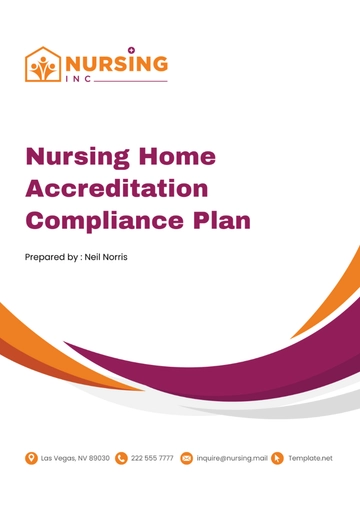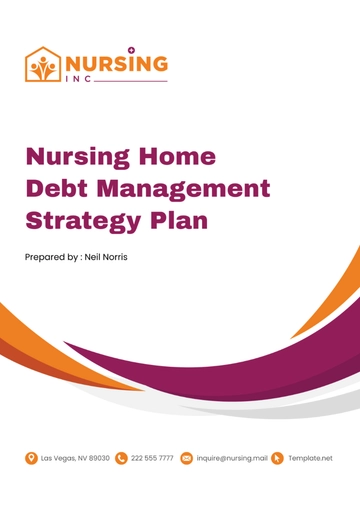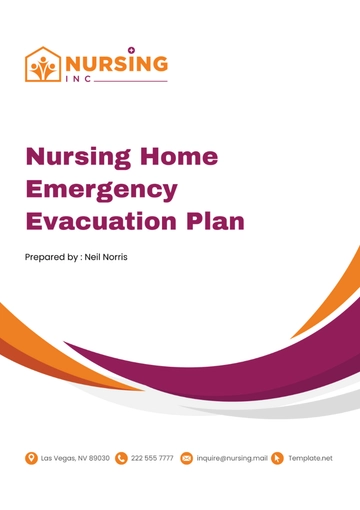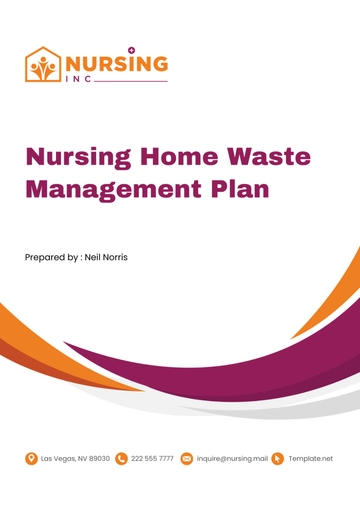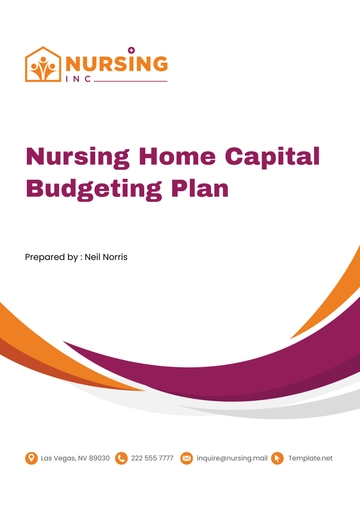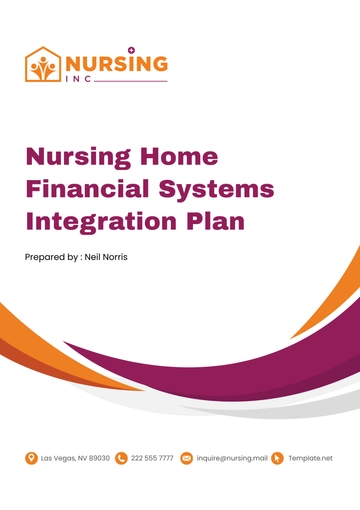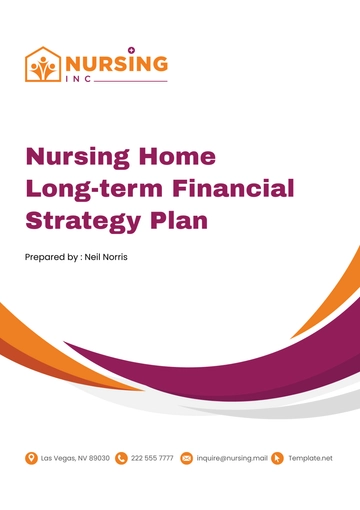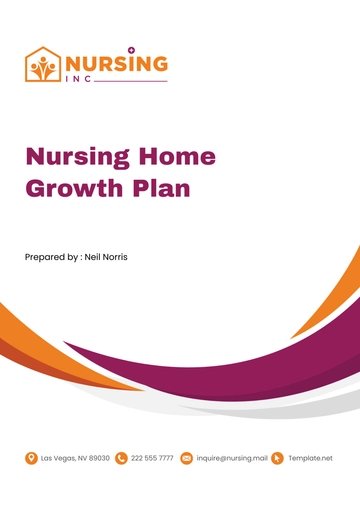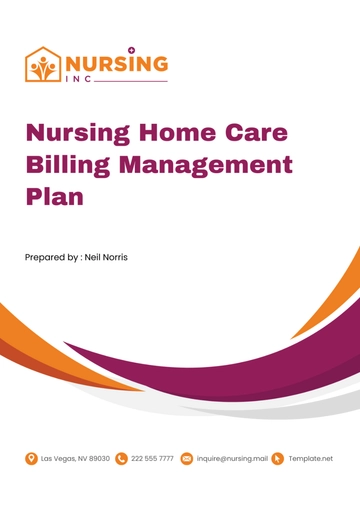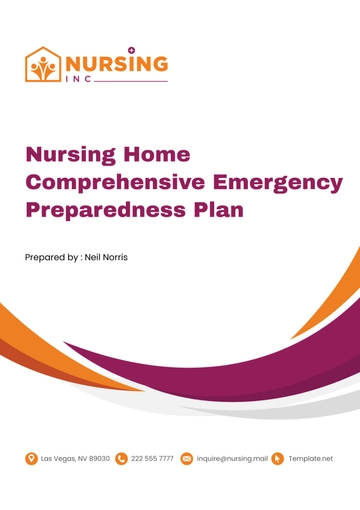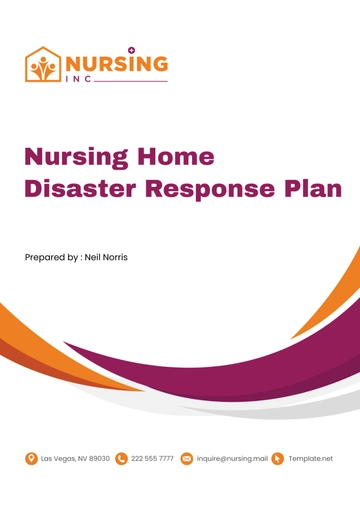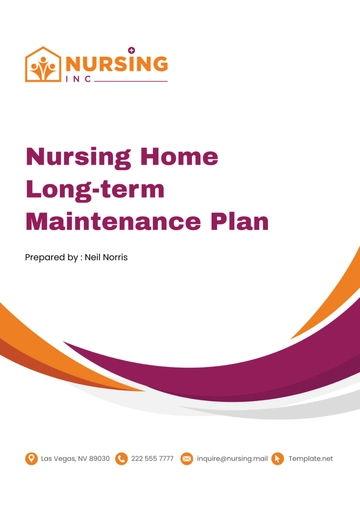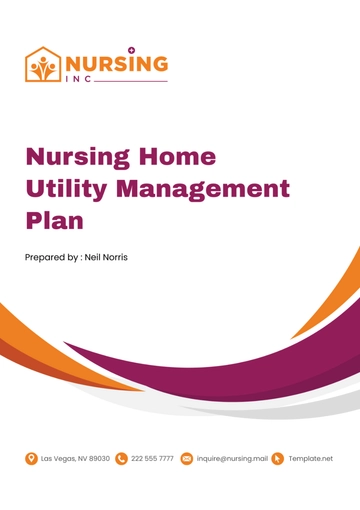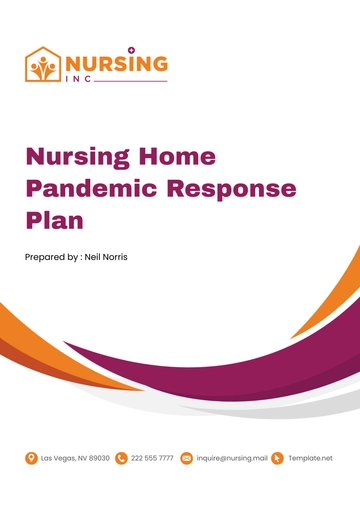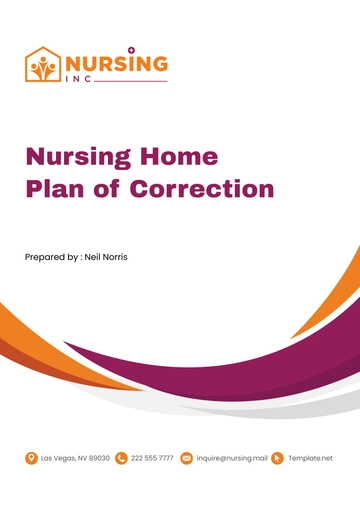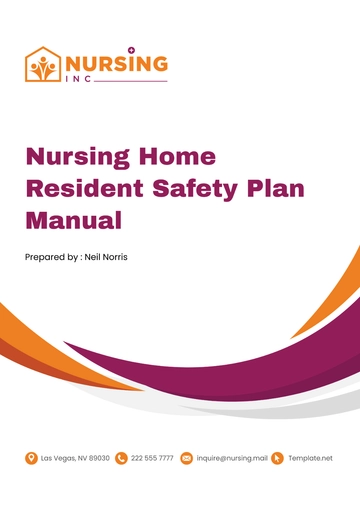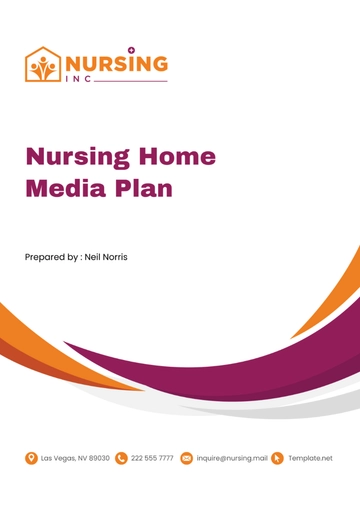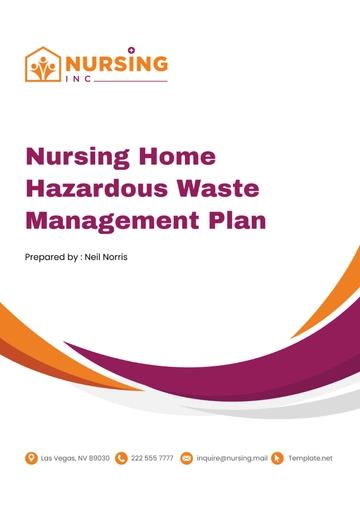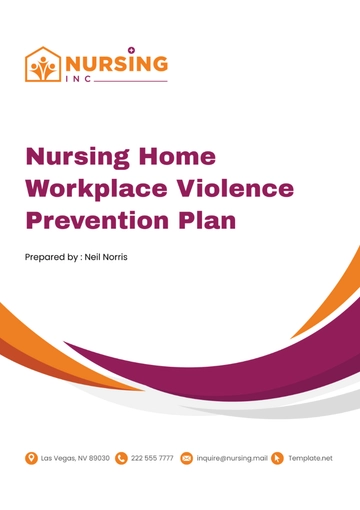Free Nursing Home Emergency Preparedness Plan
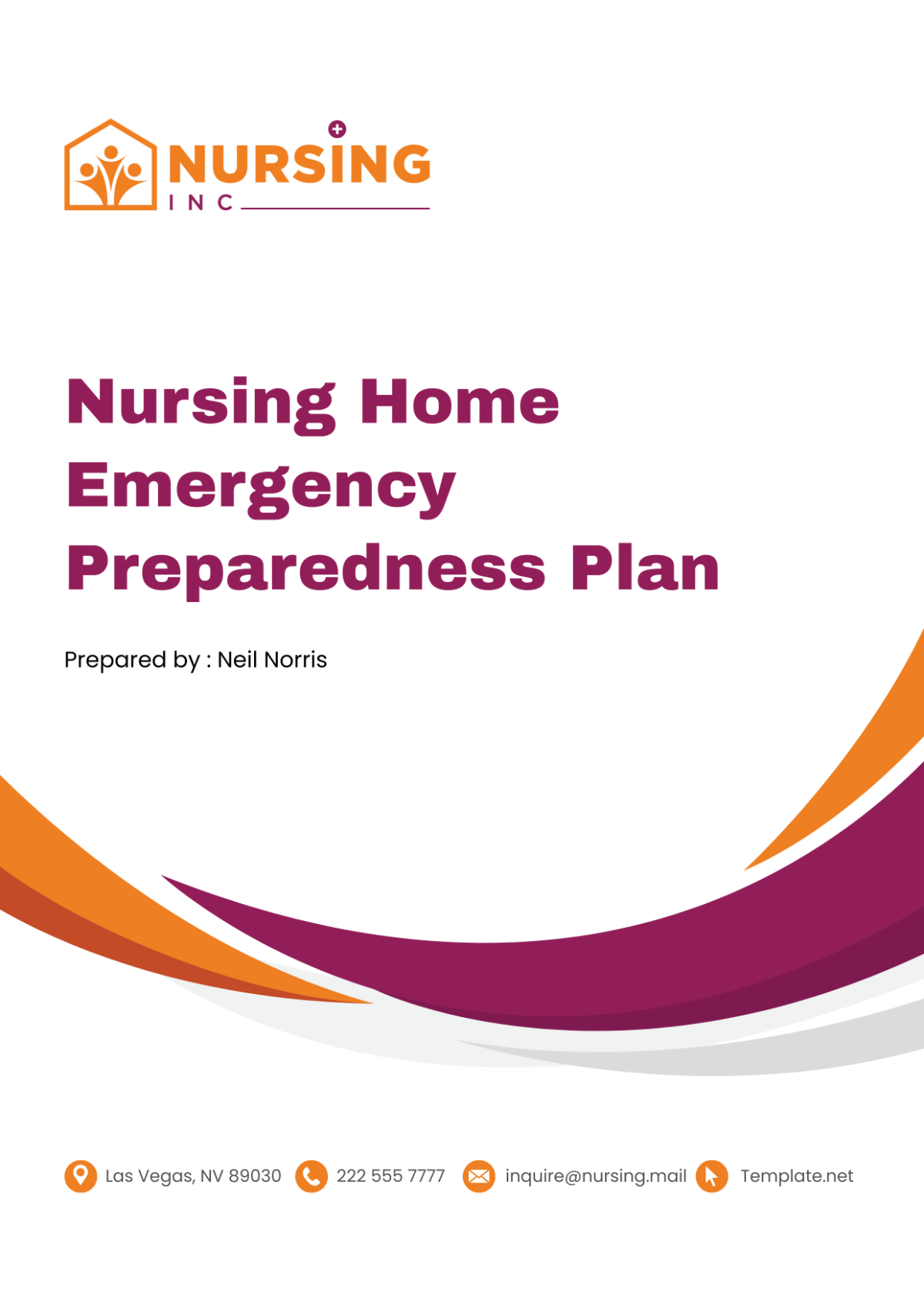
A. Risk Assessment and Hazard Identification
In the Risk Assessment and Hazard Identification section, our primary objective is to meticulously identify and evaluate potential risks and hazards that could impact the safety and well-being of our nursing home's residents, staff, and infrastructure. This encompasses a broad spectrum of scenarios, ranging from regional disasters like hurricanes or earthquakes to localized incidents such as power outages or severe storms. By conducting thorough assessments tailored to our specific location and environmental context, we ensure that our emergency preparedness plan remains relevant and effective in addressing potential threats.
Our approach involves a comprehensive evaluation of the vulnerability of key elements within our facility, including the physical infrastructure, essential services, and the individuals entrusted to our care. Through the collaborative efforts of a dedicated Risk Assessment Team, comprised of experts with diverse backgrounds and expertise, we undertake periodic reviews to identify emerging risks, assess their potential impact, and develop proactive strategies for mitigation and response. By continuously refining our understanding of potential hazards and vulnerabilities, we empower our organization to adopt proactive measures that enhance resilience and safeguard the well-being of all stakeholders in the face of adversity.
B. Emergency Evacuation Procedures
The procedures for safely evacuating the premises during an emergency are outlined in this section. It will cover evacuation routes, designated assembly areas, and specific aid for residents with mobility issues. Furthermore, it highlights the strategy for coordinating evacuation with local emergency services and authorities.
Room # | Count of Residents | Primary Evacuation Route | Secondary Evacuation Route |
|---|---|---|---|
101 | 10 | Main Hallway | Back Stairs |
102 | 12 | Main Hallway | Emergency Exit |
103 | 14 | Side Corridor | Main Hallway |
104 | 12 | Back Stairs | Emergency Exit |
105 | 15 | Side Corridor | Back Stairs |
C. Communication Plan
In the event of an emergency, effective communication is paramount to ensuring the safety and well-being of our nursing home residents, staff, and stakeholders. Our Communication Plan outlines a systematic approach for disseminating critical information internally and externally. Through clear channels and designated procedures, we facilitate swift and coordinated communication to mitigate risks and provide timely support during challenging circumstances.
Our Communication Plan utilizes a structured flowchart to delineate the step-by-step process for communication before, during, and after an emergency. This visual representation outlines how we will alert and inform internal stakeholders, coordinate with external agencies, and maintain transparent communication with families and the media. By following this process, we aim to enhance responsiveness and ensure effective communication under any circumstance.

Identify Emergency
Detection of emergency situation
Internal Communication
a. Alert staff members
Utilize internal communication system (e.g., intercom)
Assign specific roles and responsibilities
b. Inform residents
Utilize intercom or designated staff members
Provide clear instructions and reassurance
External Communication
a. Contact Emergency Services
Dial emergency numbers (e.g., 911)
Provide details of the situation and request assistance
b. Notify Families
Utilize pre-established communication channels (e.g., phone calls, text messages, email)
Provide updates on the situation and instructions for families
Communication with Regulators
Inform regulatory agencies (e.g., state health department)
Provide updates on the status of the facility and residents
Media Communication
Designate spokesperson
Coordinate media inquiries and interviews
Provide accurate and timely information, while respecting privacy and confidentiality
Ongoing Communication
Regular updates to all stakeholders
Address concerns and questions
D. Medical Care and Continuity of Operations
During emergencies, ensuring uninterrupted medical care and essential services is paramount for safeguarding the health and well-being of our nursing home residents. This section outlines comprehensive strategies to maintain continuity of operations and address healthcare needs effectively.
Access to Medical Supplies and Medications
Inventory Management: Regular assessment and replenishment of medical supplies and medications to meet anticipated demand.
Emergency Stockpile: Maintaining a designated stockpile of essential supplies and medications to sustain operations during prolonged emergencies.
Supplier Partnerships: Establishing agreements with reliable suppliers to facilitate timely procurement and delivery of critical medical resources.
Coordination with Healthcare Partners and Hospitals
Collaborative Agreements: Forming partnerships with local healthcare facilities and hospitals to facilitate referrals and access to specialized care.
Communication Protocols: Establishing clear channels for communication and coordination with healthcare partners to ensure seamless transitions of care during emergencies.
Transfer Protocols: Developing protocols for transferring residents to healthcare facilities for advanced medical care if necessary.
Maintaining Staffing Levels
Staffing Plans: Developing contingency staffing plans to ensure adequate coverage during emergencies, including cross-training staff for essential roles.
Recruitment Strategies: Establishing recruitment strategies to quickly mobilize additional personnel in the event of staffing shortages.
Staff Support: Providing resources and support for staff members to mitigate stress and maintain morale during challenging circumstances.
E. Staff Training and Education
Effective staff training is fundamental for ensuring a prompt and coordinated response to emergencies within our nursing home. This section delineates the necessary training, drills, and educational initiatives to familiarize staff with emergency protocols and enhance preparedness.
Training Requirements |
|
Drills and Exercises |
|
Ongoing Education |
|
Plan Updates and Communication |
|
F. Emergency Resources and Logistics
In times of crisis, access to essential resources and effective logistical planning are critical for ensuring the safety and well-being of our nursing home residents. This section outlines our strategies for securing emergency supplies, managing transportation and accommodations for evacuees, and fostering partnerships for additional support.
Emergency Resources and Logistics | Description |
|---|---|
Emergency Supplies |
|
Transportation and Accommodations |
|
Partnerships with Local Agencies |
|
G. Post-Emergency Recovery and Evaluation
Following an emergency, swift restoration of operations and comprehensive support for residents are imperative. This section outlines a structured approach to post-emergency recovery and evaluation, ensuring a seamless transition back to normalcy and fostering continuous improvement in our emergency preparedness efforts.

Assessment of Damage and Restoration Prioritization
Conduct a thorough assessment of facility damage.
Prioritize restoration efforts based on critical needs.
Resumption of Essential Services
Implement plans to resume medical care and support services.
Coordinate with suppliers to replenish resources.
Support for Residents
Provide emotional and physical support for residents.
Offer counseling and trauma support services as needed.
Evaluation and Plan Updates
Conduct a comprehensive evaluation of the emergency response.
Identify areas for improvement and update the preparedness plan accordingly.
H. Emergency Contact List
In the event of an emergency, having quick access to essential contacts is crucial for swift and effective response. This section provides an up-to-date list of key contacts that are vital during emergencies, ensuring timely communication and coordination of necessary services.
Emergency Contact List | Phone Number |
|---|---|
Local Ambulance Services | |
Ambulance Service | 555-123-4567 |
Poison Control Center | 555-555-5555 |
General Hospital | 555-111-2222 |
Gas Company | 555-777-8888 |
Fire Department | 555-999-0000 |
Police Department | 555-999-0033 |
Utility Company (Electricity/Water) | 555-777-777 |
I. Special Needs Consideration
Ensuring the safety and well-being of all residents, including those with special needs, is a top priority during emergencies. This section addresses the facility's preparedness to accommodate residents with physical or mental disabilities, ensuring that their unique needs are effectively met throughout the emergency response process.
Customized evacuation protocols are developed to cater to the specific needs of residents with mobility impairments or other physical disabilities. These protocols include designated evacuation routes, specialized equipment for safe transport, and trained staff members assigned to assist residents with mobility challenges. Additionally, evacuation drills are conducted regularly to familiarize both residents and staff with the procedures, ensuring a swift and orderly evacuation process in the event of an emergency.
To support residents with special needs, the facility ensures access to necessary resources, such as medical supplies, assistive devices, and medications, throughout the duration of the emergency. Staff members are trained to identify and address the unique needs of each resident, providing personalized care and assistance as required. Moreover, additional support measures, such as psychological counseling or emotional support services, are available to residents who may experience heightened anxiety or distress during emergencies, ensuring their comfort and well-being are prioritized at all times.
By proactively addressing the special needs of residents, the facility enhances its overall emergency preparedness efforts, fostering a safe and inclusive environment where all individuals receive the support and assistance they require to navigate challenging circumstances with resilience and dignity.
J. Plan Updating and Review
Recognizing the dynamic nature of emergency preparedness, we are committed to regular review and updating of our plan to ensure its continued effectiveness and relevance. Our organization will conduct comprehensive reviews annually and after every major incident, involving key stakeholders from various departments to contribute their insights and expertise.
By engaging stakeholders from across the organization, including management, staff members, and relevant experts, we ensure a holistic approach to plan evaluation and enhancement. These collaborative efforts allow us to identify emerging threats, incorporate lessons learned from past incidents, and integrate best practices into our emergency preparedness protocols. Through regular review and updating, we uphold our commitment to maintaining a robust and adaptable plan that maximizes our ability to protect the safety and well-being of our residents, staff, and stakeholders in any emergency scenario.
- 100% Customizable, free editor
- Access 1 Million+ Templates, photo’s & graphics
- Download or share as a template
- Click and replace photos, graphics, text, backgrounds
- Resize, crop, AI write & more
- Access advanced editor
Enhance safety measures with the Nursing Home Emergency Preparedness Plan Template from Template.net. This editable and customizable template outlines comprehensive strategies for responding to various emergencies, ensuring the well-being of residents and staff. Editable in our Ai Editor Tool, it's essential for establishing clear procedures, roles, and communication plans, preparing your nursing home to effectively manage potential crises.
You may also like
- Finance Plan
- Construction Plan
- Sales Plan
- Development Plan
- Career Plan
- Budget Plan
- HR Plan
- Education Plan
- Transition Plan
- Work Plan
- Training Plan
- Communication Plan
- Operation Plan
- Health And Safety Plan
- Strategy Plan
- Professional Development Plan
- Advertising Plan
- Risk Management Plan
- Restaurant Plan
- School Plan
- Nursing Home Patient Care Plan
- Nursing Care Plan
- Plan Event
- Startup Plan
- Social Media Plan
- Staffing Plan
- Annual Plan
- Content Plan
- Payment Plan
- Implementation Plan
- Hotel Plan
- Workout Plan
- Accounting Plan
- Campaign Plan
- Essay Plan
- 30 60 90 Day Plan
- Research Plan
- Recruitment Plan
- 90 Day Plan
- Quarterly Plan
- Emergency Plan
- 5 Year Plan
- Gym Plan
- Personal Plan
- IT and Software Plan
- Treatment Plan
- Real Estate Plan
- Law Firm Plan
- Healthcare Plan
- Improvement Plan
- Media Plan
- 5 Year Business Plan
- Learning Plan
- Marketing Campaign Plan
- Travel Agency Plan
- Cleaning Services Plan
- Interior Design Plan
- Performance Plan
- PR Plan
- Birth Plan
- Life Plan
- SEO Plan
- Disaster Recovery Plan
- Continuity Plan
- Launch Plan
- Legal Plan
- Behavior Plan
- Performance Improvement Plan
- Salon Plan
- Security Plan
- Security Management Plan
- Employee Development Plan
- Quality Plan
- Service Improvement Plan
- Growth Plan
- Incident Response Plan
- Basketball Plan
- Emergency Action Plan
- Product Launch Plan
- Spa Plan
- Employee Training Plan
- Data Analysis Plan
- Employee Action Plan
- Territory Plan
- Audit Plan
- Classroom Plan
- Activity Plan
- Parenting Plan
- Care Plan
- Project Execution Plan
- Exercise Plan
- Internship Plan
- Software Development Plan
- Continuous Improvement Plan
- Leave Plan
- 90 Day Sales Plan
- Advertising Agency Plan
- Employee Transition Plan
- Smart Action Plan
- Workplace Safety Plan
- Behavior Change Plan
- Contingency Plan
- Continuity of Operations Plan
- Health Plan
- Quality Control Plan
- Self Plan
- Sports Development Plan
- Change Management Plan
- Ecommerce Plan
- Personal Financial Plan
- Process Improvement Plan
- 30-60-90 Day Sales Plan
- Crisis Management Plan
- Engagement Plan
- Execution Plan
- Pandemic Plan
- Quality Assurance Plan
- Service Continuity Plan
- Agile Project Plan
- Fundraising Plan
- Job Transition Plan
- Asset Maintenance Plan
- Maintenance Plan
- Software Test Plan
- Staff Training and Development Plan
- 3 Year Plan
- Brand Activation Plan
- Release Plan
- Resource Plan
- Risk Mitigation Plan
- Teacher Plan
- 30 60 90 Day Plan for New Manager
- Food Safety Plan
- Food Truck Plan
- Hiring Plan
- Quality Management Plan
- Wellness Plan
- Behavior Intervention Plan
- Bonus Plan
- Investment Plan
- Maternity Leave Plan
- Pandemic Response Plan
- Succession Planning
- Coaching Plan
- Configuration Management Plan
- Remote Work Plan
- Self Care Plan
- Teaching Plan
- 100-Day Plan
- HACCP Plan
- Student Plan
- Sustainability Plan
- 30 60 90 Day Plan for Interview
- Access Plan
- Site Specific Safety Plan
